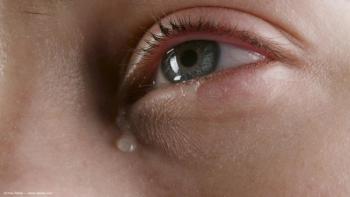
AAO 2025: The evolution of eye care on display at AAO 2025
Key Takeaways
- A machine learning algorithm outperformed human graders in identifying glaucoma risk, showing 88-90% accuracy compared to 79-81% for humans.
- Reusing eye pressure probes after hydrogen peroxide soaking could save practices significant costs, maintaining accuracy within 2 mm Hg in most cases.
The second day of the annual scientific meeting of the American Academy of Ophthalmology highlighted advancements in AI, surgery technology, and money-saving solutions.
The 2025 annual scientific meeting of the American Academy of Ophthalmology (AAO) is taking place in Orlando, Florida from October 17 through 20, 2025. On the second day of presentations during this meeting, the AAO highlighted several areas of research through issued press releases. The theme of these releases pointed to the evolution of eyecare through technology and innovation.
AI in glaucoma screenings
According to a press release form the AAO, a new study presented at the annual scientific meeting in Orlando, Florida, showed that a machine learning algorithm was able to more accurately identify patients at risk for glaucoma than trained human graders.1 This research comes out of the University College London Institute of Ophthalmology and Moorfields Eye Hospital. There, researchers used “6,304 fundus images gathered for a large, population-based cohort study (EPIC-Norfolk Eye Study).”1
The results showed that the algorithm being evaluated was able to correctly identified patients with glaucoma 88-90% of the time while the human graders were correct 79-81% of the time.1 This study brings a renewed hope for a potential cost-effective tool to better screen for glaucoma and identify patients at risk for glaucoma.
Saving money reusing medical probes
A key area of practice management and sustainability initiatives is ensuring that waste is reduced whenever possible. In a study presented at the AAO 2025 meeting, Mark Brower, DO, researched whether single-use disposable eye pressure probes really needed to be single-use.2
The methods for this research were, “After initial use, probes were soaked in 3% hydrogen peroxide for 2 hours, dried on paper towels, and stored in covered metal containers.”2 From there the researchers “measured each patient's intraocular pressure 3 times: once with a new probe, once with a probe that had been soaked once, and once with a probe soaked twice.”2
The results showed that “Probes soaked once matched new probe readings within 2 millimeters of mercury in 95% of cases. Probes soaked twice were accurate within the same margin in 90% of cases. The average difference between unused probes and those soaked once was just 0.18 mm Hg.”2
This knowledge could save practices thousands of dollars per month, leading to substantial savings over the course of a year without compromising patient care.
The evolution of LASIK
Technology continues to bring patients better care through surgical improvements. This includes the advancements in LASIK eye surgery. A study presented at the AAO 2025 meeting shows that wavelight plus achieved better visual outcomes than another laser vision correction technique.3
The study for this analysis enrolled 60 patients who underwent a treatment using a flap (wavelight plus LASIK) in 1 eye and a no-flap option (SMILE Pro) in the other. This approach was chosen to create a more direct assessment of how the two methods would perform under nearly identical biological conditions.3
After 3 months post-op, results were as follows:
- “98% of patients achieved 20/12.5 vision or better with the flap, compared to 82% without the flap.”3
- “Additionally, every eye treated with the flap was within a quarter-diopter of the target prescription, while the flap-less eyes achieved this level of precision in about three-quarters of cases.”3
- “More than 80% of eyes treated with the flap surgical options gained an additional line of vision beyond their baseline, compared with fewer than one-third of eyes receiving the flap-less surgical option.”3
The researchers noted that additional studies on a larger population as well as real-world data would further validate these data.3
In-office cataract surgery
Research into the effectiveness of sedation for office-based cataract surgery showed that patients can undergo successful surgery with minimal oral sedation rather than requiring intravenous (IV) sedation. The results of this study were that “only 10% of patients required supplemental sedation beyond the standard dose of diazepam, 5 mg for older patients and 10 mg for younger patients.”4 Furthermore, the researchers found that “no patient selected for office-based surgery needed to be rescheduled for IV sedation due to anxiety or restlessness.”4
Along with these research outcomes, the lead investigator, Brad H. Feldman, MD is conducting 2 instruction courses on office-based cataract surgery are offered during the AAO 2025 annual meeting.
The first will take place on Sunday, October 19, 2025 from 3:45 – 5:00 pm ET and is titled, “The Shift to Office-Based Cataract Surgery: Insights and Considerations From Surgeons With Varied Practice Profiles.”4
The second will be held on Monday, October 20, 2025 from 9:45 – 11:00 am ET and is titled, “Office-Based Cataract Surgeries: Legal and Practical Considerations.”4
Ophthalmology Times interviews presenters at AAO 2025
In addition to the coverage of key presentations provided by the AAO, Ophthalmology Times is on-site at in Orlando to speak with presenters about their research.
- The team spoke with Ashkan Abbey, MD, FASRS, FAAO, about the outcomes of the
VERONA and DAVIO-2 studies and how these data set up continued phase 3 research. - Ken Beckman, MD, FACS shared insights from a
phase 3 trial on Epithelium-On CXL for keratoconus. - Philip J. Ferrone, MD, provided an overview of the
TEASE 2 study , a Phase 2 clinical trial evaluating gildeuretinol in patients with moderate severity Stargardt disease.
References
- Artificial Intelligence-Guided Glaucoma Screening Shows Promise. American Academy of Ophthalmology. News release. October 18, 2025. Accessed October 18, 2025. https://www.aao.org/newsroom/news-releases/detail/artificial-intelligence-guided-glaucoma-screening-
- Eye Care Clinics Find Major Savings in Reusing Medical Probes. American Academy of Ophthalmology. News release. October 18, 2025. Accessed October 18, 2025. https://www.aao.org/newsroom/news-releases/detail/eye-care-clinics-find-major-savings-reusing-probes
- Latest Evolution of LASIK Technology Shows Superior Results in New Study. American Academy of Ophthalmology. News release. October 18, 2025. Accessed October 18, 2025. https://www.aao.org/newsroom/news-releases/detail/latest-evolution-of-lasik-technology-shows-results
- Future of Cataract Surgery May be Back at the Office. American Academy of Ophthalmology. News release. October 18, 2025. Accessed October 18, 2025. https://www.aao.org/newsroom/news-releases/detail/future-of-cataract-surgery-may-be-back-at-office
Newsletter
Don’t miss out—get Ophthalmology Times updates on the latest clinical advancements and expert interviews, straight to your inbox.








































